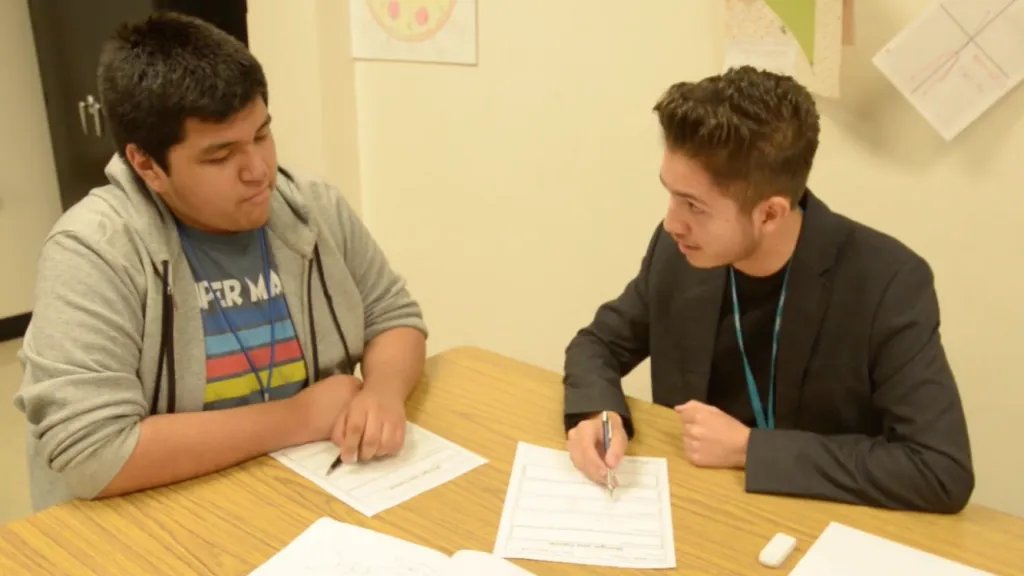Build a Classroom Culture of Communication


Build a Classroom Culture of Communication
Have you ever read the same paragraph over and over again, your eyes scanning the letters, but your brain failing to register any of the words and concepts? Or what about the time you tried to write something important, but your mind came up blank on the specific words, phrases, and organization that you wanted to use? You knew what you wanted to write, you just weren’t sure how. This is a very familiar experience for millions of English learners every day. Students full of knowledge, potential, and ideas are the same students struggling in classrooms everywhere. Can classroom teachers without extensive training in second language acquisition teach and reach them? The answer is a resounding yes!
Language doesn’t exist in a vacuum. It’s intimately woven into everything humans think, read, write, watch, discuss, and feel. The same is absolutely true for learning in the content areas. Content and language are deeply interconnected and research has shown that using authentic communication is the best way to learn new content. Students learning English are absolutely capable of learning grade-level content alongside their native English-speaking peers, but they need meaningful opportunities to read, write, listen, and speak. They need opportunities to authentically engage with the language, the content, and each other. Let’s take a look at some common challenges for ELs in the content areas and explore some doable solutions:

Challenge: Reading - Academic texts are complex and laden with compound sentences, specific vocabulary, and nominalization, which is the process of nouns becoming verbs. However, in many classrooms students are expected to learn the new content by reading. There are many assignments requiring students to read the article, read the chapter, read the book. But without the proper supports, EL students are often unable to comprehend the text, and therefore miss out on learning the content, while their reading skills continue to lag behind.
Solution - Bring more oral language into the process of content learning! Whether the delivery method is reading, lecture, investigation or inquiry process, it can be chunked into focused segments with opportunities for students to speak throughout. By giving students low-anxiety opportunities to speak and listen to their peers, they will develop an authentic understanding for the academic language they will come across in texts.
Challenge: Writing - More often than not, writing is the language domain that can be last for students to develop fully. It requires output, original thought, and an understanding of the nuanced and unforgiving English grammar system. Frequently students are given a blank sheet of paper and asked to Write a summary… Explain your thinking . . . Describe the process . . . or Justify your method. The ability to complete this task is essential to developing college and career readiness skills, but can be daunting for students still developing proficiency in English, as well as many native English speakers. But skipping the task altogether doesn’t do the students any justice.
 Solution - Believe it or not, the answer is more writing, not less! More structured writing activities embedded across content lessons help students practice. Rather than waiting until the end of class for students to summarize their thinking, why not have them do it throughout the lesson and share with a peer for feedback? Writing can and should be meaningfully integrated into every content area, every day. Even if it’s just a few sentences or a meaningful list of terms, students will benefit from drafting something related to their learning.
Solution - Believe it or not, the answer is more writing, not less! More structured writing activities embedded across content lessons help students practice. Rather than waiting until the end of class for students to summarize their thinking, why not have them do it throughout the lesson and share with a peer for feedback? Writing can and should be meaningfully integrated into every content area, every day. Even if it’s just a few sentences or a meaningful list of terms, students will benefit from drafting something related to their learning.
The bottom line - it’s all about building a culture of meaningful communication in every classroom. Undoubtedly it will benefit English learners, but all students will grow when given opportunities for authentic interaction and structured writing opportunities. Make this the best year yet in your classroom for all students!